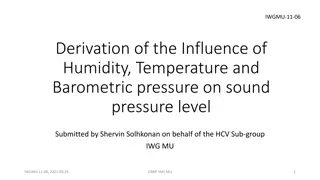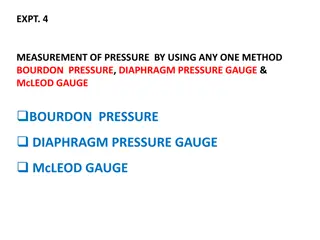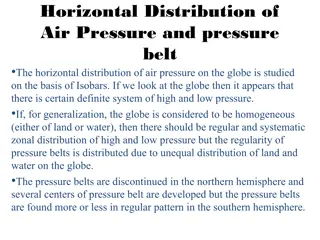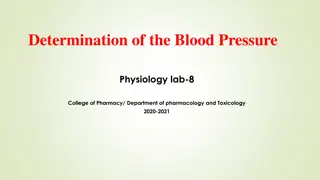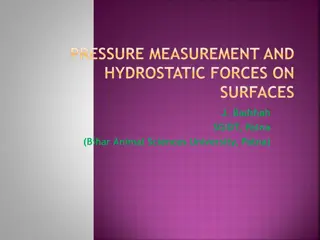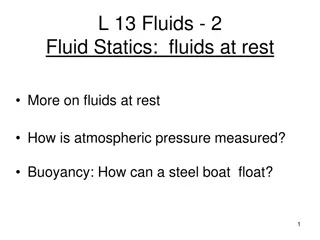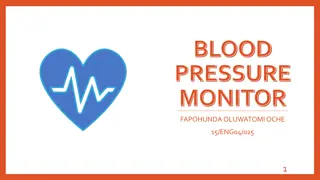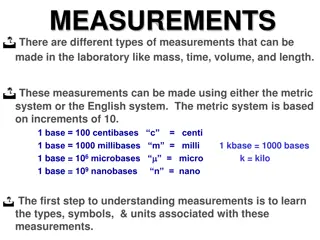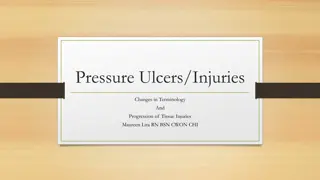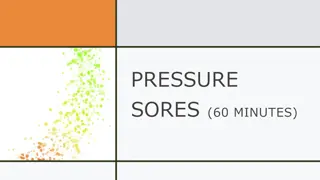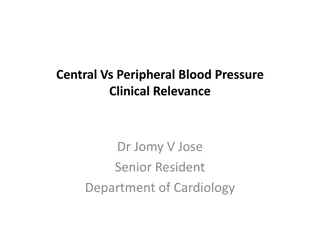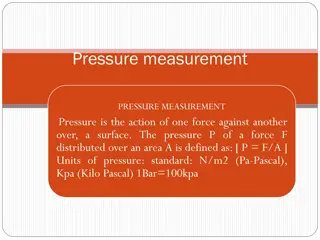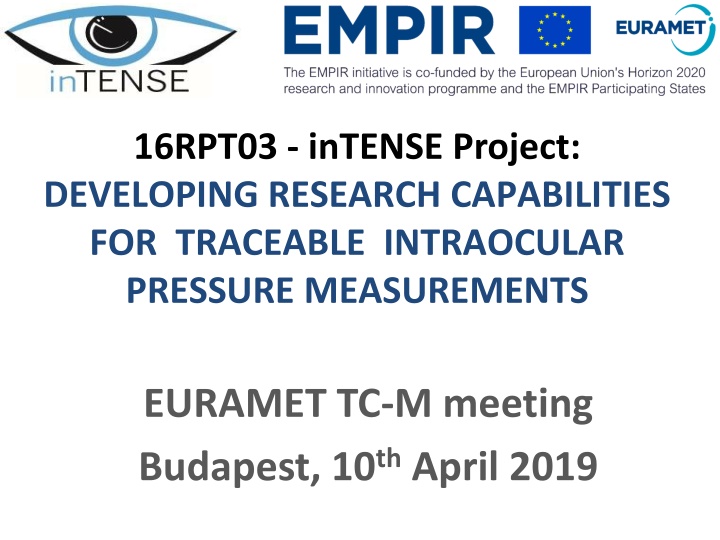
Developing Research Capabilities for Traceable Intraocular Pressure Measurements
Explore the implications of the new SI system on body liquids pressure measurements and the adoption of redefined SI base units. Learn about the advancements in medical metrology and the transition from mmHg to Pa in pressure measurements. Dive into the details of the 9th SI Brochure and comparisons of definitive constants. Discover the evolving landscape of metrology in the medical field and its impact on communicating pressure measurement results.
Download Presentation

Please find below an Image/Link to download the presentation.
The content on the website is provided AS IS for your information and personal use only. It may not be sold, licensed, or shared on other websites without obtaining consent from the author. If you encounter any issues during the download, it is possible that the publisher has removed the file from their server.
You are allowed to download the files provided on this website for personal or commercial use, subject to the condition that they are used lawfully. All files are the property of their respective owners.
The content on the website is provided AS IS for your information and personal use only. It may not be sold, licensed, or shared on other websites without obtaining consent from the author.
E N D
Presentation Transcript
16RPT03 - inTENSE Project: DEVELOPING RESEARCH CAPABILITIES FOR TRACEABLE INTRAOCULAR PRESSURE MEASUREMENTS EURAMET TC-M meeting Budapest, 10thApril 2019
Consequences of the New SI to the body liquids pressure measurements Dominik Pra k
The New SI In November 2019, the CGPM adopted the redefinitions of four SI base units (kilogram, ampere, kelvin and mole) and the new formulations of remaining three (second, metre and candela) so that the last two definitions based on an artefact (i.e. kilogram and to a certain extent also kelvin) will be removed and all will be connected to the physical and technical constants, the magnitudes of which will be fixed by an agreement. the ground state hyperfine transition frequency of the caesium-133 atom ?Cs, speed of light in vacuum ?, Planck constant ? (for kg instead of a parameter of a human made artefact), elementary charge ? (for A instead of ?0), Boltzmann constant ? (for K instead of a parameter of a substance), Avogadro constant ?A(for mol instead of ?r luminous efficacy ?cd of monochromatic radiation of frequency 540 THz. ??C C ?u), But there are also other changes, especially in non-SI units. 6thFebruary 2019 Draft of the 9thedition of the SI Brochure is available on-line.
Comparison 1 definitory constants now
New medical metrology Let us leave the sea transport, the CGS or even the bar aside and focus on medical metrology, i.e. mmHg. The abandoned millimetre of mercury has a very conservative user group. There are some materials for promoting the New SI (https://www.bipm.org/en/si-download-area/), but I have found nothing concerning the transition from mmHg to Pa in medicine at this site. Question arises how to communicate the results of medical pressure measurements.
I do not mean veterinary patients There are no additional problems expected. https://www.researchgate.net/figure/Measurement-of- intraocular-pressure-using-a-veterinary-rebound-tonometer- on-the-P-setting_fig1_308898412
ISO 80000-4 In EN ISO 80000-4:2013, there are: 1 bar := 105Pa, in the main text (as a note to Pa), 1 mmHg 133.3224 Pa, in informative Appendix C (Using these units is not recommended) Can the use of mmHg be justified by its presence in ISO 80000-4? but it is under revision
Directive 80/181/EEC In Directive 80/181/EC, there is in 1.4 units permitted temporarily : 1 bar = 105Pa, and in 4. units and names of units permitted in specialized fields only : 1 dioptre = 1 m-1, 1 mm Hg = 133,322 Pa for blood pressure and pressure of other body fluids. Can the use of mm Hg be justified by its presence in 80/181/EEC?
Harmonisation so far 8thSI-Brochure ISO 80000-4 80/181/EEC mmHg mmHg mm Hg 133.322 Pa 133.3224 Pa = 133.322 Pa blood - blood and other body fluids Very obsolete 1 Torr = 101325/760 Pa = = 133.322368421052631578947 Pa 1 (mm Hg)n= 0.001.13595.1.9.80665 Pa = = 133.322387415 Pa (World Meteorological Organisation, 1953) https://opentextbc.ca/physicstestbook2/ chapter/pressures-in-the-body/
Solution A? For eye tonometry the main reference is a Goldmann applanation tonometer which is only loosely traceable/comparable (performed only once in history?) to the very complicated invasive IOP measurements. Hence GAT results (in mmHg equivalent results) could be considered not a physical, but a technical unit (dependent on measurement procedure) as e.g. Vickers or Brinell hardness. But it would create a discrepancy with the sphygmomanometry, where the continuity is needed much more.
Another view which I fiercely disagree! DERWENT F.W., OAKLAND W.H.: Naming the Units. Nature 220 (1968) 311.
But notorious with medical quantities 51 3.6 90 60 90 120 80 Again, I fiercely disagree! But no user cares.
Solution B? If we can do from a dimensionless number a dimensional quantity, e.g. amount of substance, we can do also vice versa: By introducing dimensionless pressure via mercury constant with dimension Pa-1and magnitude 1/133.322, the system can run like ever but formally correctly.
Thank you very much for your attention. dprazak@cmi.cz


